Image Gallery: Extraordinary Environmental Art
Mother Nature's Palate
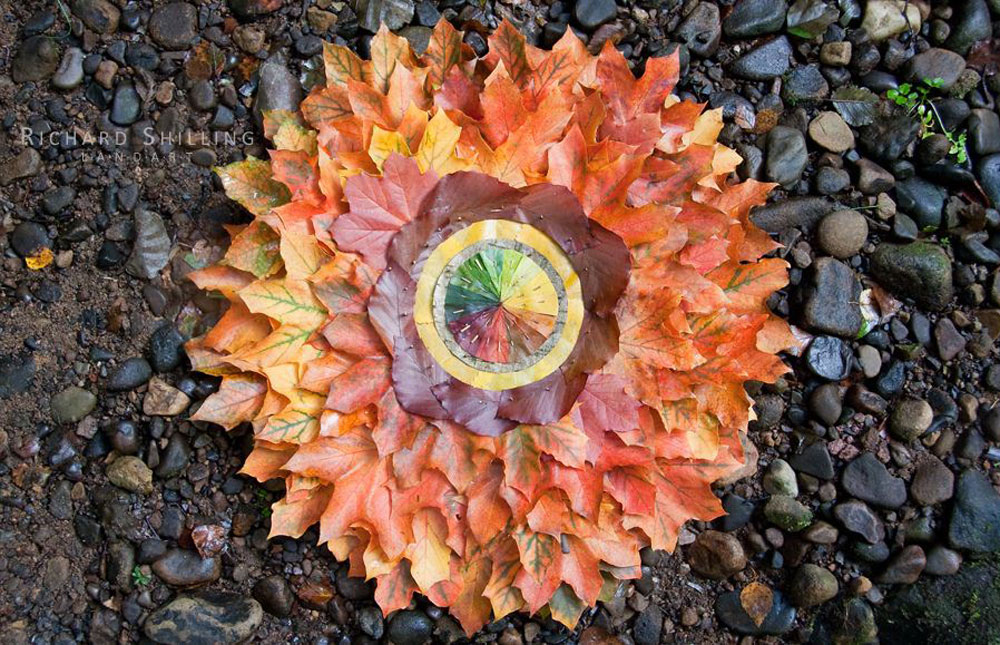
For some artists, creating a thought-provoking piece doesn't require a canvas or frame. Using only materials found in nature, such as flower petals, seashells or tree branches — even sand and water — "environmental artists" construct amazing eco-friendly artwork. For example, the above color wheel was created by artist Richard Shilling using autumn leaves and a circle of ash bark.
From stunning stone sculptures to strategically placed leaves, we've rounded up a gallery full of amazing environmental art. Click on for more natural beauty.
Flower of Life
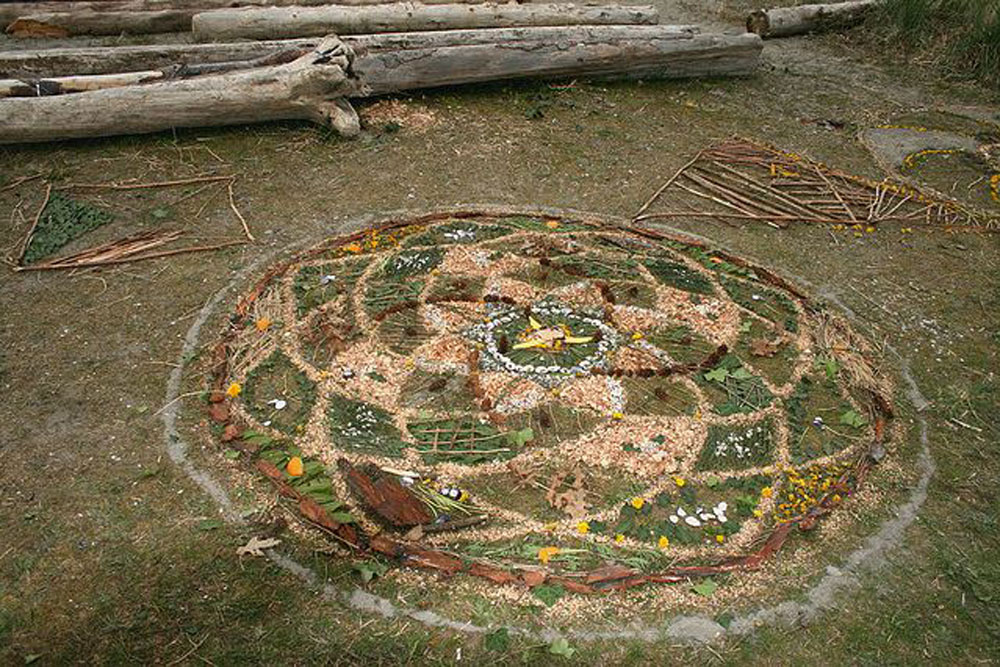
Environmental art is also known as land art, earth art, ecological art, nature art or green art.
The above design was photographed on Jericho Beach in Vancouver, British Columbia, during the 2008 Canadian Earth Day celebration. Although the creator is not known, the photographer noted that the piece was made using beach sand, rocks, seashells, cedar bark, driftwood, twigs and flowers, as well as green and dry leaves.
Snow Shadows
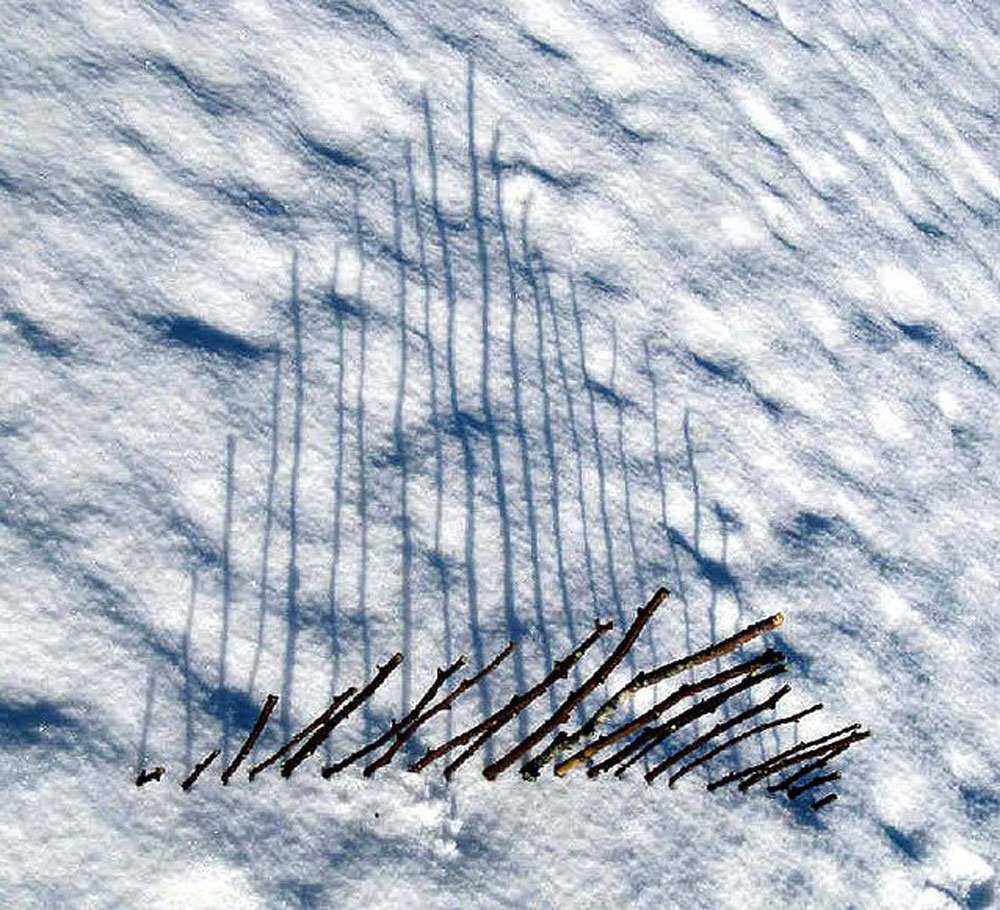
Environmental artworks can be painstakingly intricate or beautifully low-key. This piece was created using sticks found in the historic woods of Scotland's Highlands. The small twigs were placed in the snow in a clearing near the woods so that they would catch the sun's rays and create a long, slender shadow.
Blossom Dam
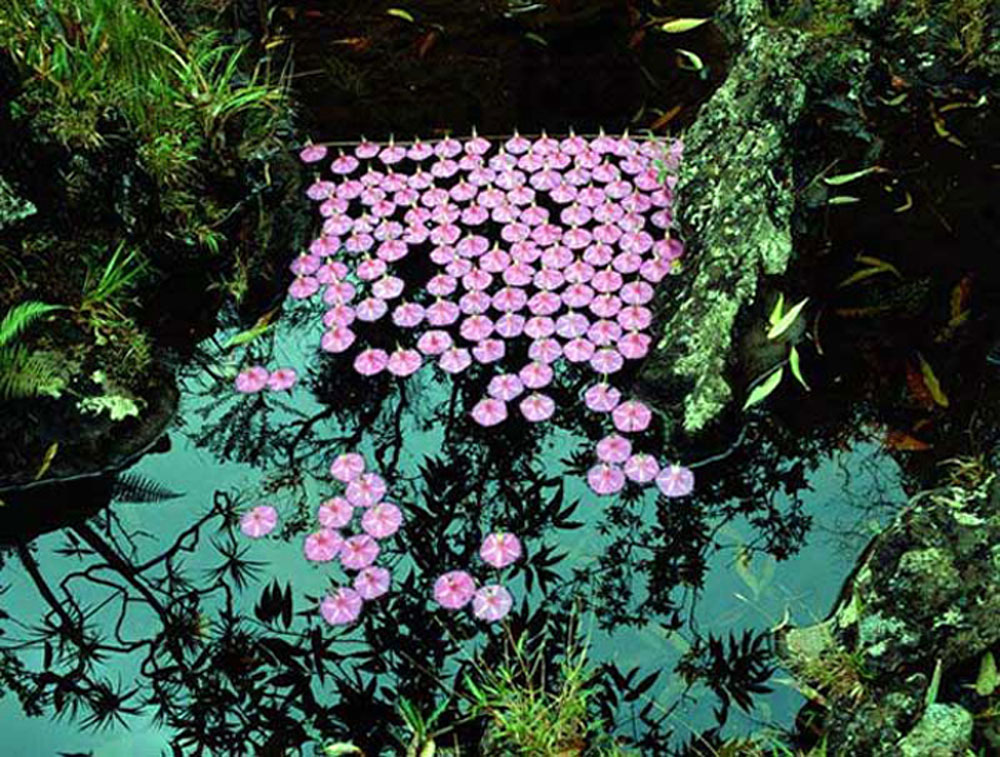
Nils Udo, a German artist who has been creating environmental works since the 1960s, often makes "ephemeral art," or artworks that exist for only a limited amount of time as a result of the natural materials used to make them. Thankfully, photographs render the physically fleeting artworks as frozen in time for viewers to enjoy.
Udo made the above work in 1990 by creating a stick dam to hold back bindweed flowers, also known as morning glories,as they floated along a stream in Réunion, an island located in the Indian Ocean.
Perfect Balance
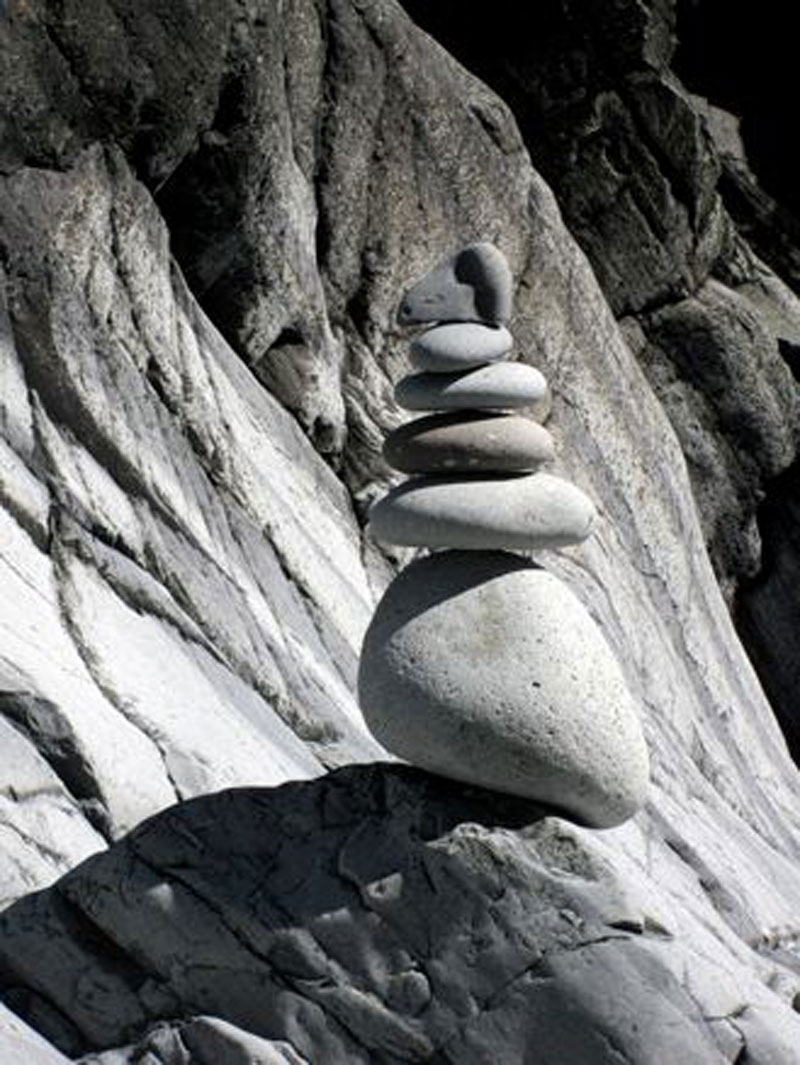
Stones are a popular medium for environmental artists, and famous "nature artists" such as Andy Goldsworthy, Michael Heizer and Richard Long created iconic artworks using large stones, pebbles or slate rocks.
This sculpture was made from stones found on Nine Wells Beach in Pembrokeshire, Wales, during low tide. Many environmental artworks are temporary, and are left to break apart or decompose naturally. This piece only lasted a few hours before high tide washed it away.
Razor Daisies
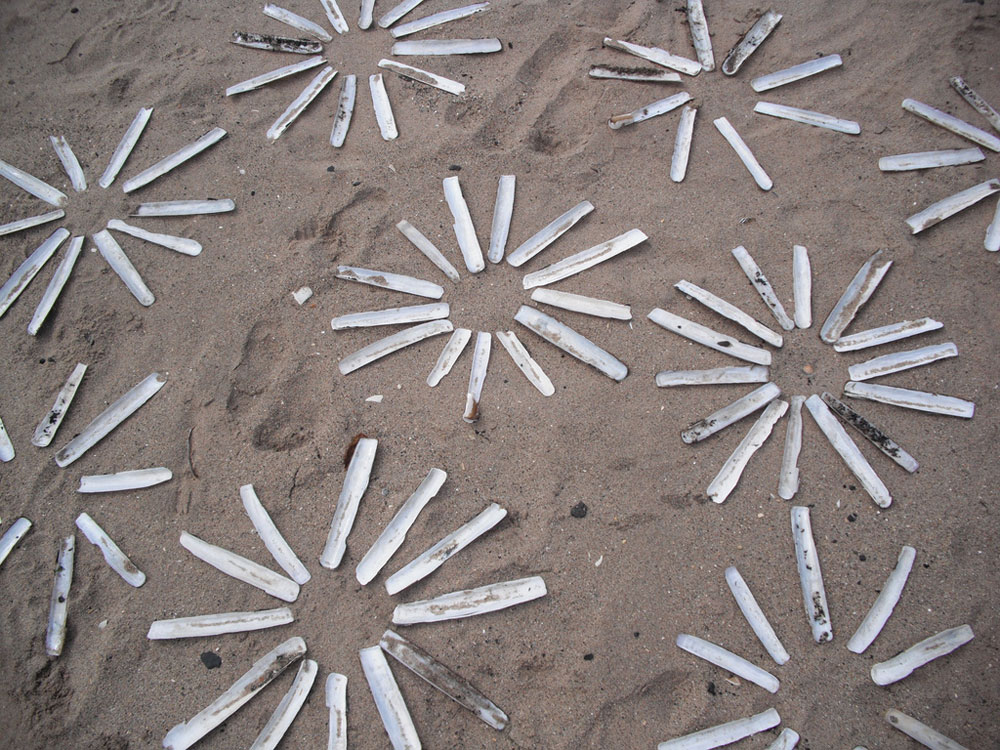
Environmental artist Hazel L. Terry arranged the dry seashells of razor clams, which are characterized by their long, rectangular shape, in flower patterns along the beach in Kirkcaldy, Fife, located on the east coast of Scotland.
Nesting Place
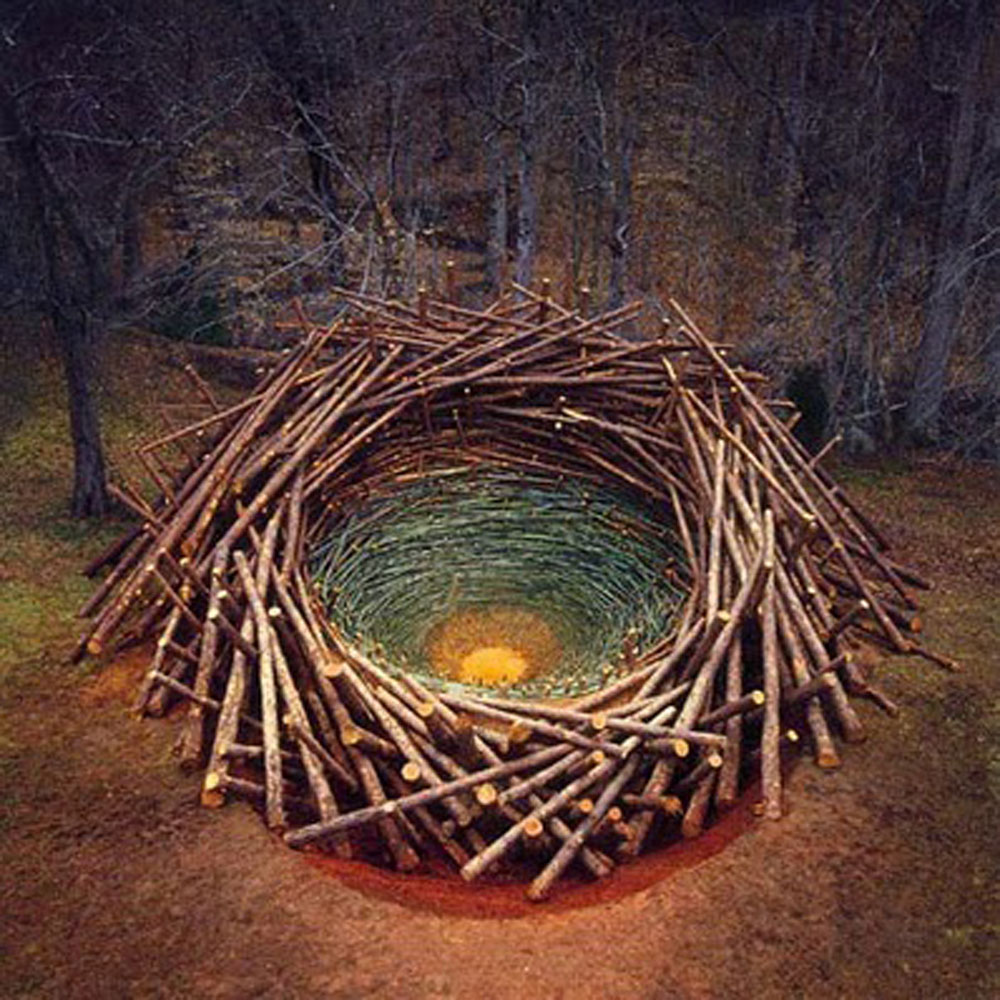
Nils Udo's"Nest in Red Clay" was created by the edge of a forest in Clemson, S. C., in 2005. The artist dug a hollow in the bright red soilto suit the large nest, which is rimmed by grass and trees.
The nest itself was constructed using long pine trunks, with the interior made of green bamboo sticks that taper toward the bottom. The center of the nest consists of the bare clay dirt.
Sign up for the Live Science daily newsletter now
Get the world’s most fascinating discoveries delivered straight to your inbox.
Shining Seaweed
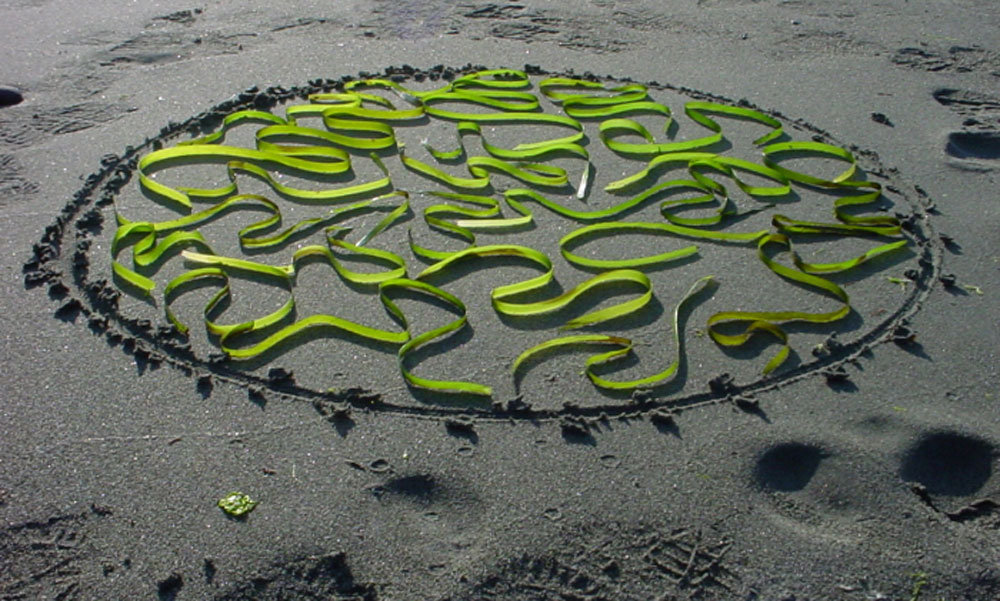
Environmental artist Gloria Lamson created this piece, called "Seaweed - Light" in 2006 on the shores of a beach in Port Townsend, Wash.
Uprooted
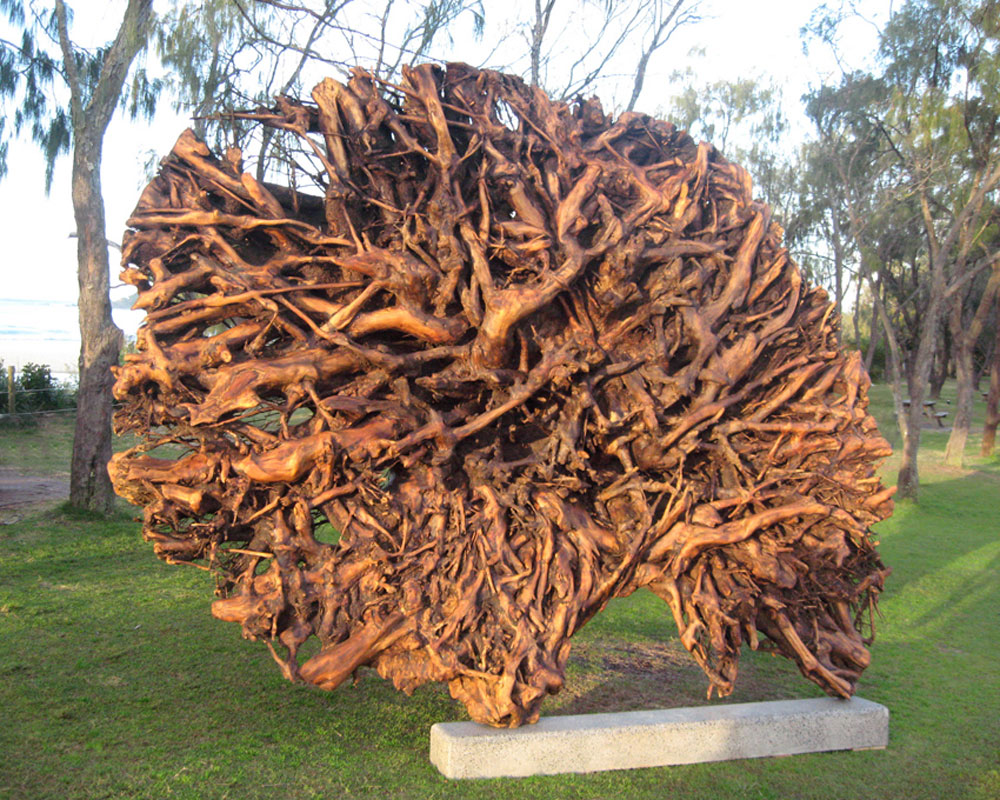
This sculpture was made from the trunk and root ball of a camphor laurel (Cinnamomum camphora) tree and is approximately 11 feet (3.3 meters) high and extends 19 feet (5.8 m). Called "Monumental Environmental Artwork," the sculpture was made by environmental artist John Dahlsen over the course of two years. The tree was first donated to Dahlsen by an eco-farmer in its raw state, with its roots compacted by a hardened black soil.
The artist cleared away the embedded soil, and shaped the tree's roots into an overall roundish shape. Once he had smoothed down the tree's surface, Dahlsen applied three coats of organic oils, along with a final coat of beeswax mixed with jojoba oil for preservation.
Fallen Tree
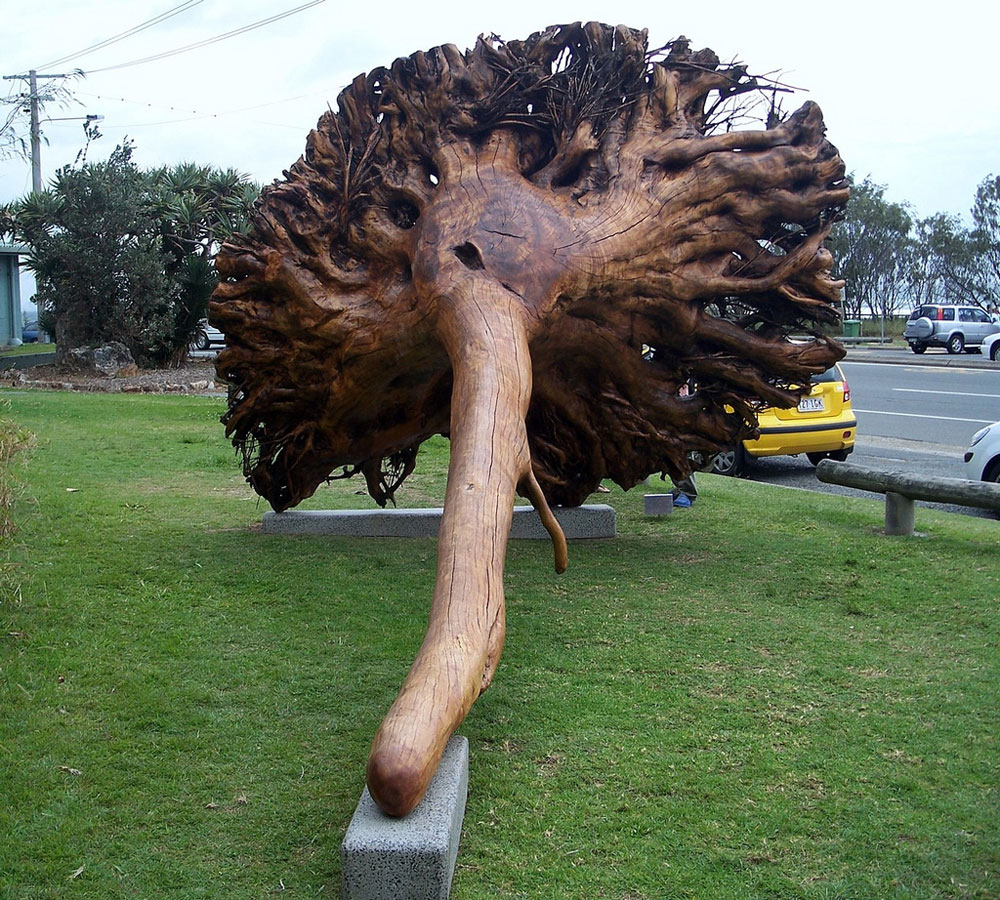
Another view of John Dahlsen's fallen tree sculpture from a different angle. The piece was photographed while on display during the 2010 Swell Sculpture Festival, held in Queensland, Australia, where the artwork won the "Swell" sculpture prize in the Environmental Art category.
Seaside Shell Designs
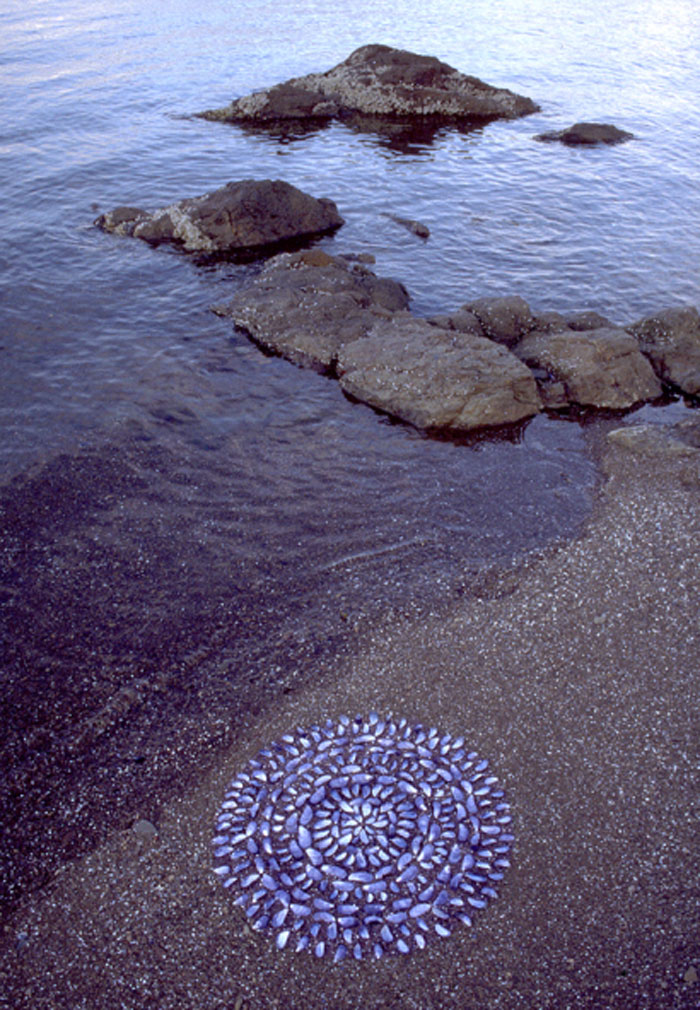
This piece, created by Gloria Lamson, is called "Mussel Shells with Incoming Tide" and consists of empty mussel shells arranged on the beach of a small, unnamed island in Southeast Alaska.









